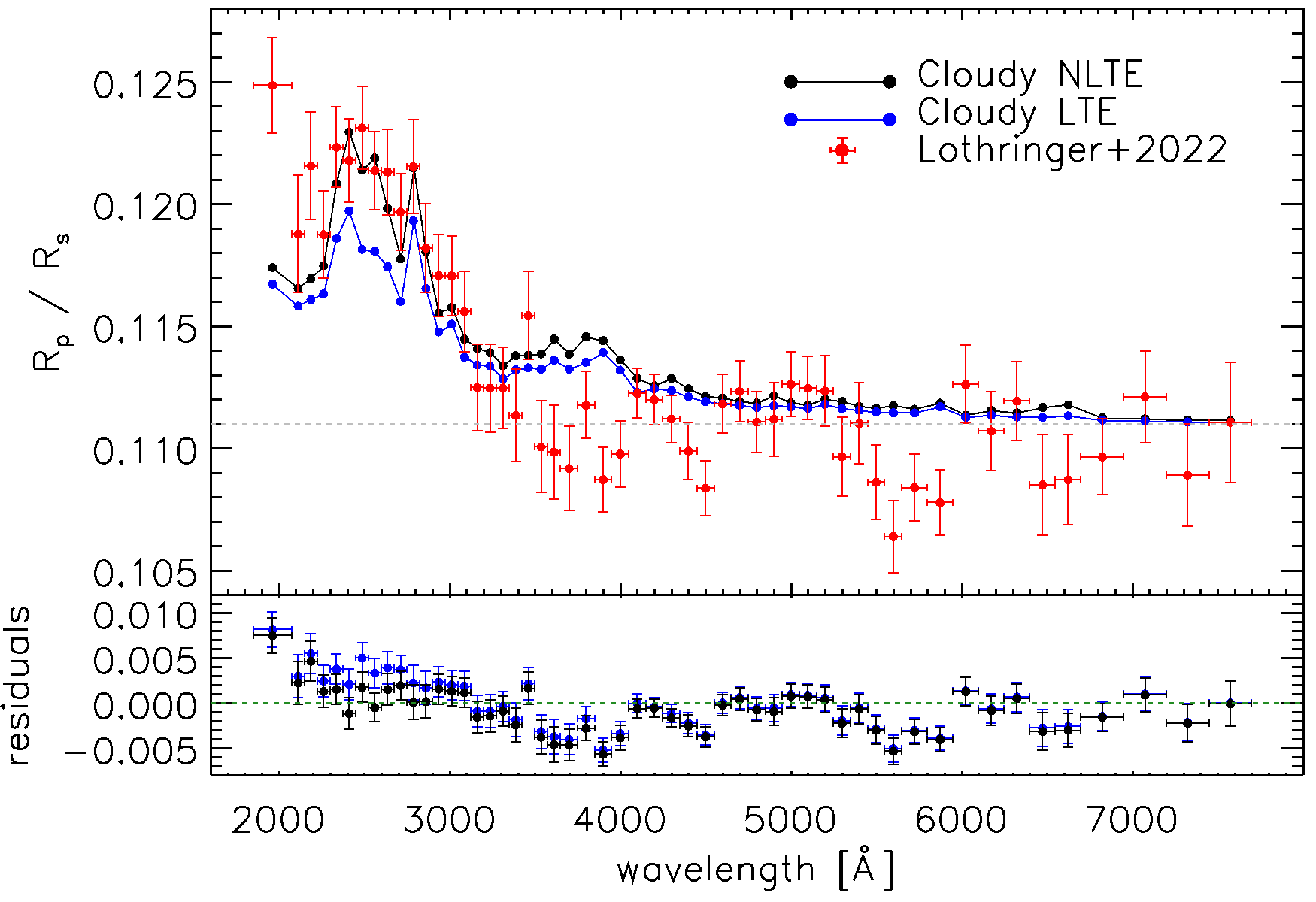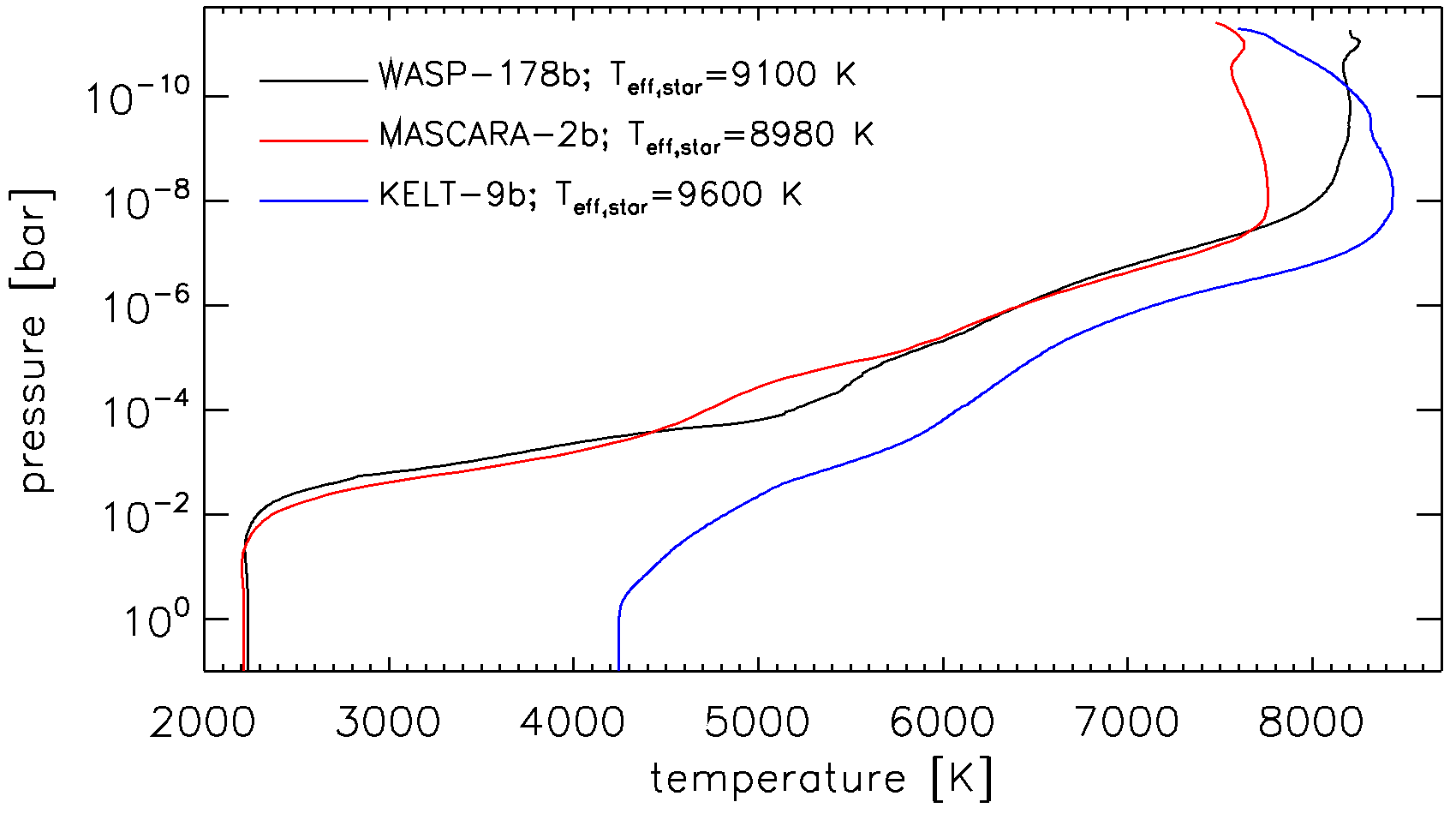Our team participated in the analysis of an ultra-hot Jupiter WASP-178b, led by Dr. Luca Fossati from Graz (Austria), and collaborators. This is the third study by the research team on similar hot planets, where direct models accounting for Non-Local Thermodynamic Equilibrium (NLTE) are used to constrain the planet’s atmospheric temperature, abundances, and mass loss rate. A detailed analysis of the atmospheric thermal balance shows that accounting for NLTE effects significantly increases the middle and upper atmospheric temperature. This is due to a combination of increased heating due to the overpopulation of long-lived FeII levels, and decreased cooling due to the underpopulation of MgI and MgII levels that dominate radiative cooling. A strong absorption due to the overpopulation of those FeII levels heats the atmospheric temperature of the planet to an enormous 8200K in its extreme value in the upper part of the atmosphere. Despite the hot upper atmosphere and the rather low planetary mass, the lack of strong stellar XUV emission implies that the atmosphere remains mostly hydrostatic. The NLTE model predicted the planetary mass-loss rate of about 4.5×10¹⁰ g/s, which is comparable to that of classical hot Jupiters.
The researchers also compared the synthetic transmission spectra computed in LTE and NLTE with the available observations of the Hα and Hβ lines, and low-resolution data obtained with instruments on Hubble Space Telescope (HST) such as STIS and WFC3/UVIS. They found that the NLTE transmission spectrum overestimates the observed Hα and Hβ absorption, whereas the LTE model is more consistent with the data. This is surprising given that the NLTE models of the hydrogen Balmer lines computed for the other very hot planets, KELT-9b and MASCARA-2b/KELT-20b, match the observations remarkably well (and much better than the LTE models). Authors suggest that, because of the hydrodynamic nature of the upper atmosphere where the Hα and Hβ lines form, particularly at high spectral resolution, future attempts to reproduce the observations should account for hydrodynamics in addition to NLTE effects.
Authors also find that the NLTE transmission spectrum is an excellent match to the low-resolution UVIS observation, particularly in the NUV band, which is mainly the outcome of the hotter NLTE TP profile compared to the LTE one. Therefore, accounting for NLTE effects in the computation of the TP profile and transmission spectrum might be critical (as shown in the figure) for making the best use of the available observations to advance our understanding of the hottest planets.

Comparison of the NLTE (black) and LTE (blue) theoretical transmission spectra with the HST WFC3/UVIS observations published by Lothringer et al. 2022. The horizontal error bars shown for the red points correspond to the size of the wavelength bins. The bottom panel shows the residuals between the observation and each of the models, with a green dashed line at zero for reference.

